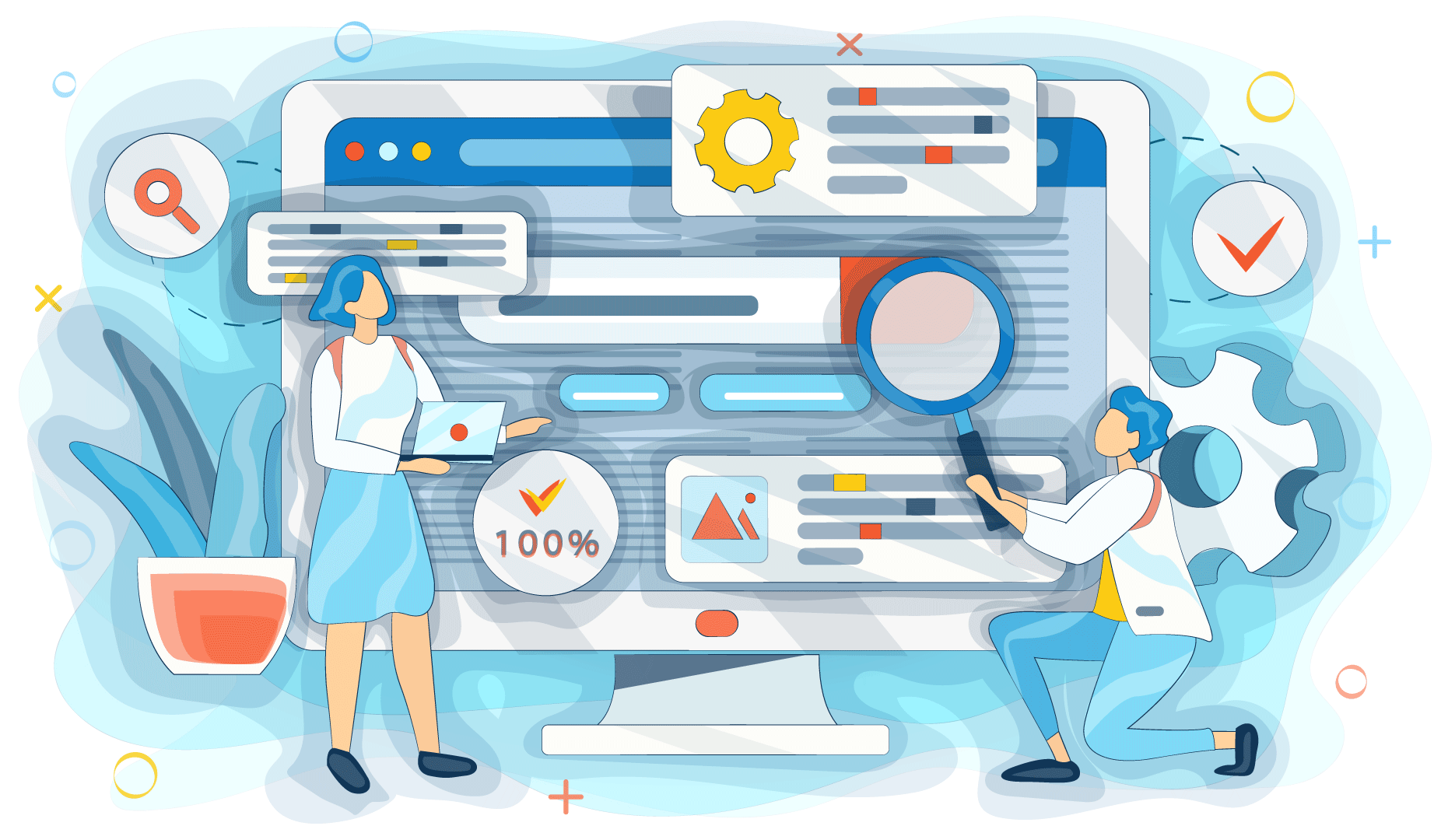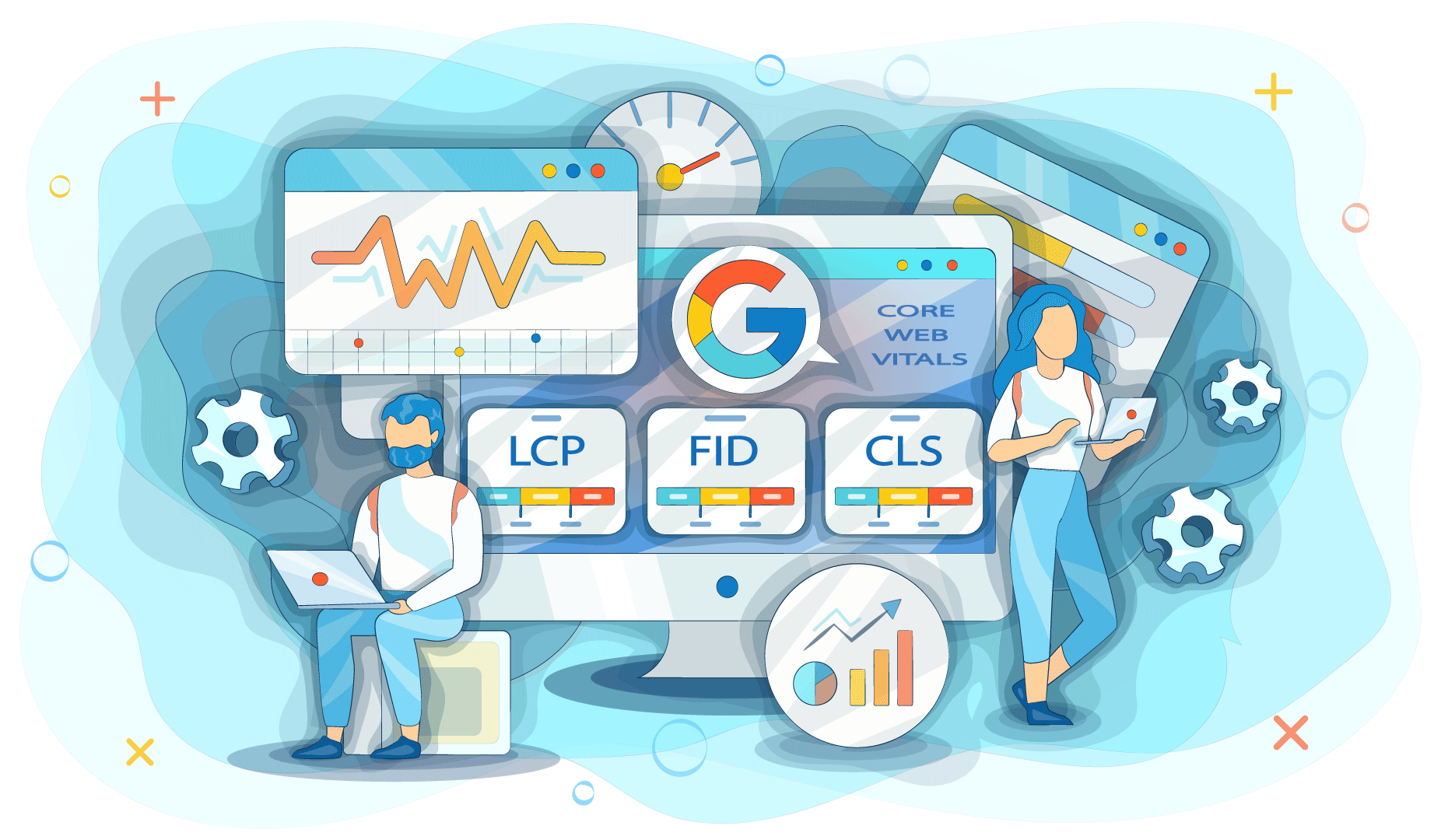A good website should have a low bounce rate and a high conversion. It means that as few visitors as possible should have the desire to leave the site, and as many users as possible should want to click the call-to-action button to, for example, buy something.
An interactive interface can help you reach these goals. Interactive elements draw attention to themselves and keep users engaged. They make visitors do something with the website instead of just consuming the content without any actions. And it’s important that users interact with the site because it increases the chance they will click a call-to-action button along the way.
So let’s figure out what are interactive elements, and how to use them to keep visitors engaged and drive the conversion
What are the interactive elements?
An interactive element is something that makes users act instead of scrolling passively a website. If a visitor just needs to look at the page, chances are very high that a notification somewhere will pop up or some other distraction appears, and users will leave the website.
Interactive elements engage a visitor into the interaction with a page making them perform some kind of actions. Then a user becomes more engaged, and it’s harder for them to get distracted by something else. That’s how an interactive interface can drive the conversion — by merely making a visitor stay on the website.
Why should you use interactive elements?
Well, the answer is simple — because most online users have a poor attention span. They simply can’t remain focused on the content for a long time if all they need to do is to just read the text. Merely reading an article can work for a blog — then the visitor will come to a website with a purpose to read. But if you want to sell something, you need to make your interface more interactive and entertaining to keep the visitor interested.
Stats show that the average user has an on-page attention span of just 10 seconds. Will you be able to persuade them to buy something from you within this time? Quite doubtful. And if a user has to scroll down to view the content, the rate of the attention span drops even lower.
So the only solution is to do something that will drive the attention of users and make them more engaged. That’s why we need interactive elements. Moreover, they need to be implemented somewhere close to the point when a visitor pops on a page so that you can get the attention of a user right away.
Let’s take a look at any social media website. It’s highly interactive — notifications are popping up and making a sound, the information flows rapidly in a news feed. And if we’re talking about Facebook, we also get different games, quizzes — you name it. It’s very much different from how most websites look like — lots of static text broken into several blocks and diversified with some images. Boring, right?
While there is nothing wrong with long reads, you must understand your goals. As we’ve already said, sheets of text are fine for a blog. But they won’t work for a website that has to sell.
How do interactive elements work exactly?
They motivate visitors to complete the action you need — to buy an item, for example. The more users complete the target action, the higher is the conversion rate of the website. But it’s not only about conversion — interactive elements have other benefits, too.
They lower the bounce rate
The bounce rate is the percentage that shows how many people left the website almost right after opening it and without interacting with it. Interactive elements engage a user into the interaction with the page, therefore, making them stay on the site. The more visitors remain on your website, the lower the bounce rate is.
They improve your SEO
A bounce rate heavily impacts the position of your site in search engines. So by lowering the number of visitors that abandon your website, you will get another positive bonus — your search engine rank will improve.
They help you build a relationship with your audience
You can learn your target audience better and let it get to know your brand through interactive elements. In the next section, we will take a look at the examples of such elements, and you will see how they can help you gain the loyalty of your audience.
What can interactive elements look like?
The way you implement the interaction into your interface is up to your imagination and creativity. Some websites feature a completely interactive interface that constantly requires visitors to do certain actions to unveil the story this page is supposed to tell. And if you work with an experienced web designer, they should be able to offer you some unique ideas. But for now, let’s take a look at the most popular practices.
Charts and infographics
Most people consume the information better if it’s visualized and not represented just as text, especially when it comes to some stats or other data that’s hard for a human to consume. Infographics and charts are a great solution for such cases because they allow you to represent complex information in a way that’s easy to digest.
As a bonus, these tools might drive traffic to your website as visitors will share useful data. Moreover, unique and quality infographics show the target audience that you care about their comfort, and that you’re an expert in your area. It will help you gain the trust and loyalty of your visitors.
Use polls, quizzes, and surveys
These tools can both help you find out more details about your target audience and make your website more engaging. For example, an e-commerce site can create a quiz that will help visitors choose the product that will be the best fit for them. Such an approach allows you to reach three goals simultaneously — your users spend less effort and time choosing what to buy, the chance they will buy something increases, and you get an opportunity to find out more about your buyers.
Videos and animations
Something that moves is engaging by itself. Animated objects or videos will drive engagement and improve the user experience your visitors have. However, such interactive elements should be well-optimized, otherwise, they can increase the load time of your pages. Then they will do more harm than good.
These are just a couple of the most popular ways to make a website more interactive. But even if you use only them, you will see a significant improvement in your conversion rate. However, implementing interactive elements remember that they might increase the loading time of your pages. To avoid that you should work with an experienced web designer who knows how to make things run smoothly. Also, you need a sustainable hosting for your site that will provide you with unlimited bandwidth — and King Servers got you covered here. Check out our flexible pricing plans for hostings and cyber protection for your website. We will make sure your visitors don’t experience any delays using your site.

























